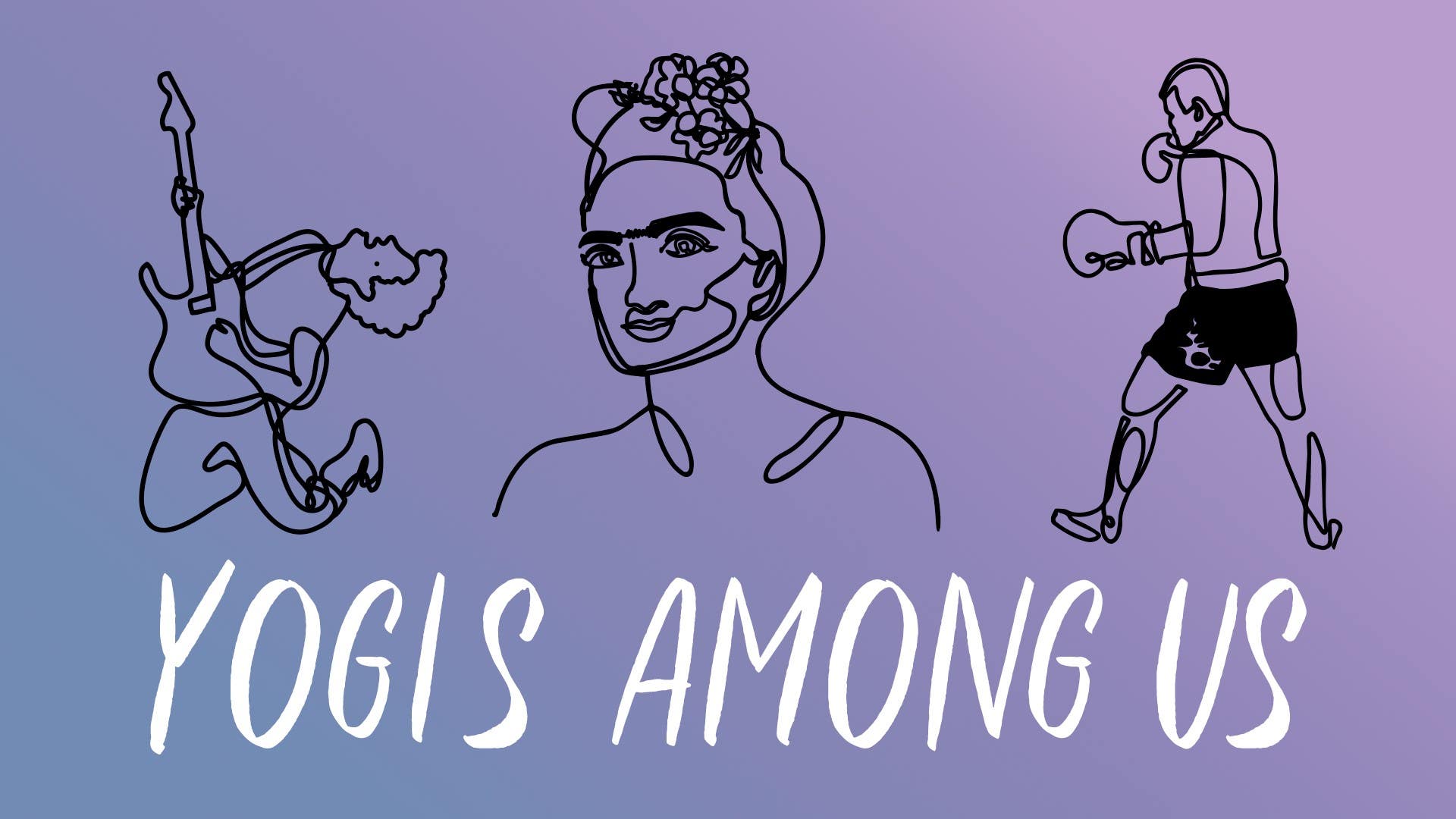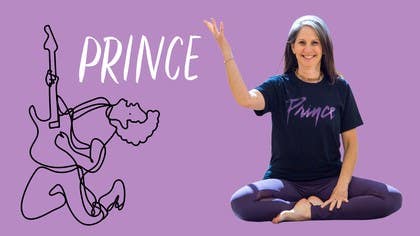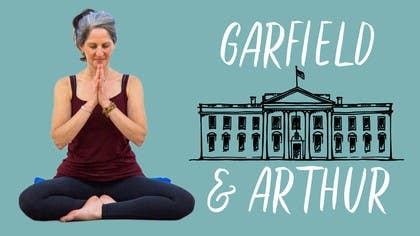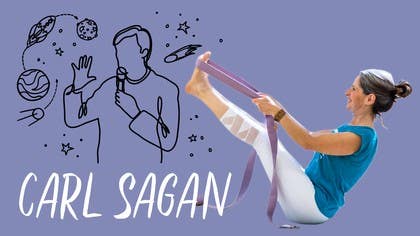Description
About This Video
Transcript
Read Full Transcript
Chapter 1
Talk
There used to be a musical variety show on NBC called The Midnight Special, and in 1980 they featured a new artist who came out on stage wearing basically a leopard print negligee. It was plunging at the neckline, it was open at the midriff, and it was frilly and pretty, and it had matching panties, all leopard print. The artist was wearing thigh-high boots, and he had a guitar strapped to his back, and he had this glorious afro shoulder length, and he sang a song called I Wanna Be Your Lover. This was Prince, nobody knew what to make of him. Was he a rock star?
Was he a R&B crooner? Was he a gospel singer? Was he a preacher? Dearly beloved, we are gathered here today to get through this thing called life. Was he a composer?
Was he a poet? Was he a hip-hop artist before hip-hop was a thing? Yes, he was everything. And he was so much of everything that ultimately, and you know where this is going, he dropped his name because he recognized a teaching that the Tao Te Ching explicitly says, and it says that the Tao that can be named is not the real Tao. And the suggestion here is that once you put a label on something, you diminish it.
Once you say what something is, then by definition, you're saying all of the things that it isn't. We find this identical teaching in the Yoga Sutras. The Sutras lay out five root causes of suffering, and one of them is in Sanskrit, asmita, which means the ego, which means that when we identify with a small and separate and selfish idea of the self, then we are locked up in suffering. We are clinging to an ego identification that limits our potential. Ultimately, this can lead to real pain.
Shakespeare knew this. Picture Juliet on the balcony saying, Romeo, Romeo, wherefore art thou Romeo? Deny thy father and refuse thy name, for if thou wilt not, I should no longer be a Capulet. Those by any other name would smell as sweet, tis but thy name that is my enemy. Thou art thyself, not a Montague.
It was their names that stood between them and happiness, and it was their names that ultimately led them to their deaths. So because this is about Prince, you know where this is going. He changed his name to an unpronounceable symbol. And the outward reason that he did this was because of a dispute with his record company. He felt that their ownership of his music was a sort of enslavement of him, and he called himself a slave.
And so he dropped the name and adopted this famous symbol. But there was an underlying current to why he did it, and he talked about this in an interview with Larry King during the period when he was the artist formerly known as Prince. And he told Larry, he said, listen, I have a legal relationship with my record company that is problematic in the moment, but my spiritual relationship with them and with everyone else and everything else is on a different plane. And that's the plane where this symbol lives, and that's the plane where this name is meaningless. He said to Larry, all we really all are is love.
He extended that love to so many other people. He had many proteges, many of whom he actually wrote songs for. And when he did this, when he was writing songs for other artists, he didn't use his name either. He used Christopher Tracy or Alexander Nevermind or Joey Coco. He had lots of pseudonyms.
And he did this so that he would be retracting his ego in support of the work and the artistry of these other people whose music he respected as much as his own. He also played with gender roles. He was never anything but admittedly a cisgendered heterosexual male, famously so, but he also explored what would it mean to take on the role or the feeling or the persona of another gender. He explores this in his song, If I Was Your Girlfriend. And he recognized that the human spirit is too large to fit in the container of man or woman.
He wanted to feel what it would be like to be the other, to be both, or to be neither. This was no secret to the Buddhists. They defined the three characteristics of human nature. And one of them is anatta, which means not self. And so we're working here with this idea that what is the self?
We have the Sanskrit word for atman, which means a sort of a soulful self as opposed to the selfish self. The soulful self that embraces the concept that we live in our own selves in the same way that the self lives in every self in the universe and can transcend to the universal self and that those two are intimately connected. So how would a practice look that abandons this idea of labels and names that doesn't have names of poses and confines of lines and shapes that we are supposed to embody? Let's explore that now together and we'll come to table pose.
Chapter 2
Practice
So with the hands about shoulder width apart and the knees about hip width apart, we are in this posture that is formerly known as table.
And we're just going to move, explore, shift, feel. The fingertips are spread wide. The base of each finger, the base of each knuckle is rooted into the mat. The wrists are shifting as the shoulders are shifting. The arms are straight and strong and then sometimes they're bent and flowy.
The hips can sweep from left to right. The hips can shift from tucked to arch. The pelvis can tip forward and back. The spine can flex and extend and swirl and stream. We can explore moving into what we might consider to be halfway to a cobra pose and we can explore moving back into what might be considered halfway to a child's pose.
But all the while we're not thinking about what pose are we doing? What names are we calling these movements? We are just feeling the manifestation of the movement in the body. The head is hanging freely and then sometimes it's alert, lengthened through the very top of the spine, through the neck to the base of the skull. Finding the breath, exhaling when it feels natural to exhale and then when the impulse arises to inhale, we observe that happening too.
At a certain point, you might explore moving the knees a little bit back, a few inches to the rear of the mat and then moving almost back to what we think of as child's pose and then putting a nice big rounding shape into the spine as you shift the shoulders forward and then right at the point where you think, okay, where are my legs going to go next? Keep the hips where they are, keep the shoulders where they are, but put a back bend in it as if you were going to then lower into something that looks like a grasshopper to a cobra. And then from here, not quite moving all the way down, push the floor away from you and go back toward what might feel like child's pose. And then round the spine again, shift forward, forward, forward until you feel that the arms are upright, put a back bend in it, lift the heart, lift the gaze and push the floor away from you, guiding yourself back toward what you might think of as a resting child's pose and then you could slide the hands back along the mat, drop the chin, drop the brow and then find your way back into it again, shifting, exploring, breathing. Do you feel like a rock star?
Do you feel like an R&B crooner? Do you feel like a dancer or a writer? And then after some amount of time where you're feeling satisfied with those movements, tuck the toes, push the floor away from you, shift the hips back in here, sensing the energy of a playful puppy about to pounce. You can start to rise up into a flowy purple prince dog. Again, shifting the hips around, shifting the spine around, playing with bending the knees deeply, raising the pelvis high, straightening the legs as much as you can, sinking the pelvis low, awareness of the breath always helps, deep inhales, full exhales, lowering the knees, push the floor away from you back to child's pose, shifting the hips a little bit from side to side, and we come back up to table pose.
And from here again, push the floor away from you until your hips are almost to the heels or as far as they're willing to go. Cross one ankle over the other and if this is okay with your knees, roll back and sit behind your feet and land in a seated cross-legged position. If this is not okay for your knees, another option is to shift back, push the floor away, drop your hips onto one side and swing your legs around in front of you and then take a simple seated cross. Come back to table and we'll do it again if you can remember which ankle went on top, cross the other one. If you can't remember, the one that goes on top now is going to feel odd and that will be the correct one to do second.
Roll back over your heels and come to a simple cross-legged seat. So set yourself up in a comfortable cross-legged seat, I like to have a blanket or two to lift the sitting bones and begin to shift the spine again, rounding it as you have your hands on your knees, you can drop the head and sink a little bit back and then as you inhale, you can shift forward, lift the heart, lift the gaze as if you're pulling the knees toward you for traction, lifting up high, exhale, shifting back, rounding the spine, let the heart retract a bit, let the chin and the head drop and relax, inhale, pull your knees toward you, providing traction to lift and extend up and out. And then we can add the flowy aspect of Prince, are we this or are we that, yes we are all of that and all of this, shifting around, breathing in, breathing out, rolling the shoulders a little bit to open up the chest and the heart and then we can take the arms up, inhaling nice and deep, lift the arms, lift your gaze, look at the space between your two hands and on the exhale, slowly float the arms down again and just about when we're thinking we're finished with the exhale and the drop, it turns into an inhale and a lift and so was it an exhale and a drop and is it an inhale and a lift, yes it's all of those things and we're blurring the lines between one thing and the other. The next time we exhale, bring the arms down, take a little twist to the right and when the hands land, turn the heart, turn the gaze, inhale again, reach up and just when the exhale arrives we turn to the other side, bring the arms down, turn the heart, turn the gaze, inhale, reach up, one more time to each side, exhaling to the right, turn the heart, turn the gaze, let the breath settle and turn into its next round. Inhale back up, facing forward, this time we'll tip over to the right, so we drop the right arm and reach with the left fingertips all the way out to that opposite angle, turn the head, maybe turn the heart, feel both sitting bones rooted solidly in the floor or on your blanket, back up with the inhale, both arms rising, the heart is rising, the gaze is lifting, exhale over to the left, reaching through the fingertips, exhale, come back down and then when it feels satisfying and stillness is appealing, just gently close your eyes, observe the breath arriving and departing at every turn, as you inhale, imagine that the breath is helping you manifest yourself, helping you exist and create and function in this form that is your body, that is yourself, your personality and then as you exhale, let that exhale represent the truth that we are all in existence in soft relationship with each other and in soft relationship to everything around us and that the separations that we perceive are tissue thin.
Take a few more breaths, continuing to acknowledge the grounded nature of your own self and the expansive nature of your own self and then after the next soft conscious exhale, bring your palms together in front of your heart, may all beings be happy, may all beings be free from suffering, may all beings be at peace, thank you for practicing today.
Yogis Among Us
Comments
You need to be a subscriber to post a comment.
Please Log In or Create an Account to start your free trial.




















